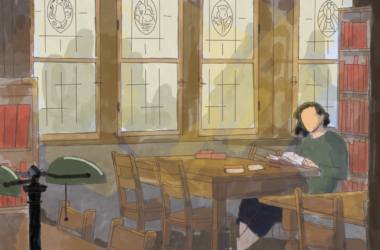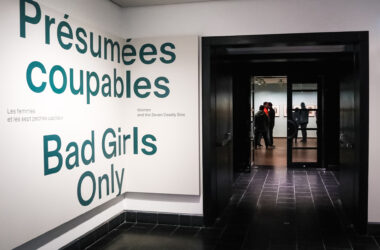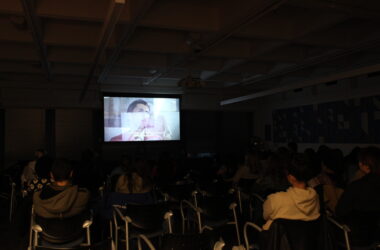They’re baaaaaack—and not in a cute nursery rhyme kind of way. Sheep have tiptoed their way back into the cultural frame, not just as pastoral props but as full-blown characters, metaphors, and messengers. From a blood-streaked Icelandic hybrid in Lamb to the soft-eyed flocks in Bergers, the modern media sheep is anything but innocent.
Sophie Deraspe’s Bergers (or Shepherds) features numerous sheep, but none are quite as unsettling as the humans around them. The film follows a disillusioned Montreal advertisement executive, Mathyas, who escapes the corporate grind to become a shepherd in rural Provence. This might sound like millennial burnout-turned-farmer fantasy, but Deraspe doesn’t romanticize. Instead, she places her protagonist face-to-face with an uncompromising truth: Nature doesn’t care about your spiritual awakening.
In Bergers, the sheep aren’t mythical, magical, or symbolic. They are bodies—vulnerable and ultimately commodified. As Mathyas learns, even this so-called simple life turns out to be unstable, challenged by a shifting climate and economic strain. He is initially drawn to the romantic notion of a pastoral life. However, he soon faces the harsh realities of herding and the struggles of adapting to a new way of life. Nature is harsh, indifferent, and, at times, violent.
Lamb (Valdimar Jóhannsson), on the other hand, could not strike a more contrasting tone. The Icelandic folk horror follows a couple adopting a half-human, half-sheep creature named Ada. On paper, it’s absurd; in execution, it’s devastating. What begins as a tender attempt to reclaim lost love spirals into horror with the arrival of Ada’s ram father. This isn’t just folklore gone feral; Lamb unfolds like a dark environmental fable: Nature, again, refuses to be rewritten.
So, why sheep? And why now?
In pop culture, sheep have long signified docility—“sheeple” being used as an insult towards conformists. But as Lamb and Bergers portray, that connotation is ready—and even destined—to change. These stories portray sheep not simply as the symbol of innocence we know from nursery rhymes or nativity scenes, nor as a symbol of docility. Instead, they use the animals to critique how humans project their desires—whether for control, comfort, or escape—onto the world around them.
A man trades his desk job for a field of bleating livestock, or a family dresses a sheep-child in baby clothes: Beneath all the absurdity lies a real discomfort. These images are too close to fantasy to be real but too grounded to dismiss. The sheep reveal just how anxious we can be about agency, autonomy, and belonging. They reflect the quiet fear of wanting to escape the systems we’re born into but having nowhere to run. Whether shepherded or anthropomorphized, sheep expose our need to make sense of disconnection through control, care, or even delusion. The unease comes not from the sheep themselves but from the human need to reshape them into what we want them to be.
The cultural fascination with sheep is never only about cinematic allegory, nor is it new. Sheep have long been used as a symbol in both fashion and pop culture. From Princess Diana’s iconic “black sheep” sweater to Lamb Chop, a 20th-century sock puppet known for her surprisingly sassy comebacks, they’ve made their mark. The image of the sheep constantly sways between conformity and defiance, obedience and disruption. Maybe that’s the point. In a media landscape increasingly obsessed with binaries—good vs. evil, tech vs. nature, us vs. them—the sheep offers something more blurred and possibly more real.
They aren’t just back—they never really left. It’s just now that they are stepping into the centre, not to lead or to follow, but to remind us that meaning often comes dressed in wool.









